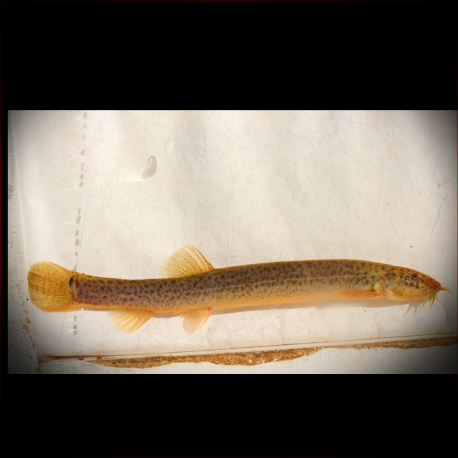상품설명
Datasheet
| 최소 탱크 크기 | 280 litres / 73.97 US gallons |
| 최대 크기 | 28.0cm / 11.02inches |
| 온도 | 5°C / 41.00°F - 24°C / 75.20°F |
| 경도 | 1-12º |
| pH | 6.0-8.0 |
일반적인 설명
"Oriental Weather Loach는 대체로 매우 견딜만한 성향을 가지며, 서로나 다른 종들과도 평화롭지만 알이나 자기, 아주 작은 물고기를 포식할 수 있습니다. Misgurnus spp.는 혼자서 기르기도 가능하지만, 상위 수영하는 거대하고 활발한 물고기와 함께 있는 것이 더 자연스럽고 활발하게 행동하는 것으로 나타납니다. M. anguillicaudatus는 자신보다 물 위에서 더 높이 수영하는 중대형 물고기와 함께 있을 때 최적의 상태입니다. 먹이시간에 활동적인 'fancy' 형태의 골드피시와 좋은 친구로 소개되기도 하지만 주의해야 합니다."
어항 설치
어항 설치는 부드러운 모래나 파인 그라벨 기반으로 제공되어야 하며, म자전거의 시간을 완전히 묻거나 눈만 비췄을 때 보낼 수 있도록해야 합니다. 다른 장식물로는 수생 돌과 나무 가지/나무 뿌리 등이 포함될 수 있으며 이것들은 숨을 수 있는 곳과 그늘진 곳을 형성하도록 배치되어야 합니다. 광선은 식물을 키우려는 경우를 제외하고는 꽤 어둡게 되어야 하며, 약간의 잎 쓰레기들이 자연적인 효과를 더할 수 있습니다.
행동
Oriental Weather Loach는 대체로 평화로우며 다른 물고기와 함께 잘 어울립니다. 하지만 무척 작은 생물을 포식하기도 합니다.
사료 및 식습관
Misgurnus spp.의 일반 먹이는 곤충 유충, 작은 갑각류 등을 포함하는 포식성이 강조된 형태입니다. 어항에서는 가라앉는 건조 사료를 수용하지만 작은 실물과 얼음처럼 언동이 있는 식사를 정기적으로 제공해야 합니다. 이러한 다양한 식단이 최상의 건강 상태를 유지하는 데 중요합니다.
번식 및 이형성
Misgurnus Anguillicaudatus의 번식은 자연적으로 M. fossilis의 것과 유사한 과정을 겪을 것으로 생각됩니다. 번식은 2~3년 후인 110mm SL쯤에 이루어지며, 여성은 암컷에 남성을 이끄는 길을 열고 암수가 완전한 고리를 형성할 때까지 몸을 감싸고 둥근 대비후악을 가진 lamina circularis를 가진 수컷들이 곧 잠자리가 된다.
서식지 및 분포
Distinct Korean species with a relatively large adult size which can reach up to 28cm. The species is native to Siberia, Sakhalin island, Korea, Japan, China, northern Vietnam, and possibly Laos. It has since been introduced to various countries including Germany, Spain, Italy, Kazakhstan, Uzbekistan, Turkmenistan, the Philippines, U.S.A. (including Hawaii), Canada, and Australia. Prefers shallow, slow-moving sections of rivers and streams, and calm habitats such as swamps, oxbows, backwaters, and paddy fields. Often found in heavily-vegetated areas with soft mud or silt substrates. Can adapt to varying water conditions.
성별 차이 및 생식
성체 암컷은 일반적으로 수컷보다 몸집이 크고 더 무게가 많이 나갑니다. 성숙 수컷에서는 흉부지느러미가 커지고 두 번째 강화된 점을 형성하는 것이 보입니다. (참조: Species: Misgurnus Anguillicaudatus)"Adult females are typically heavier-bodied and a little larger then males. In mature males, the pectoral fins are enlarged with a thickened second ray forming a structure known as the lamina circularis which in M. anguillicaudatus is rounded with a smooth posterior edge. Males also exhibit horizontal “swellings” on the body behind the dorsal fin which are clearly visible when the fish is viewed from above."

